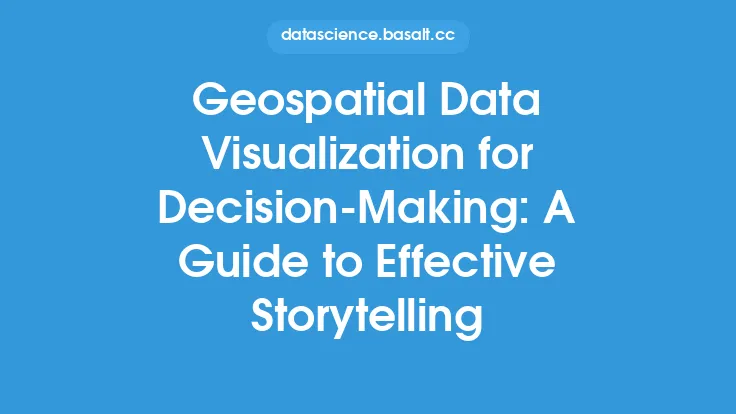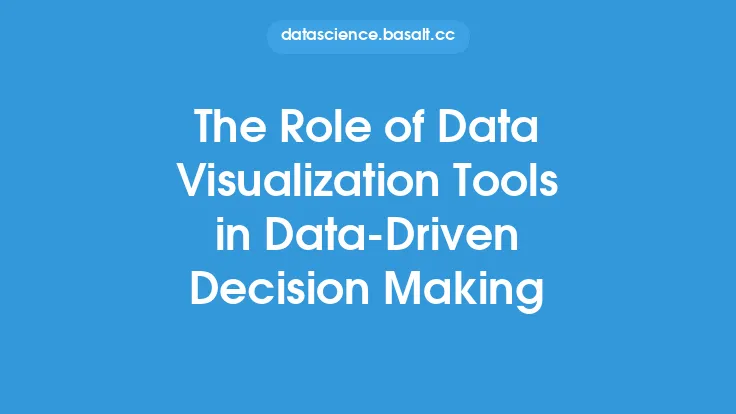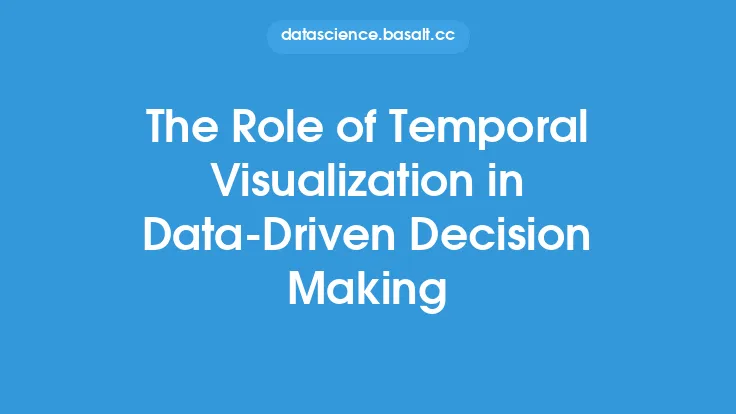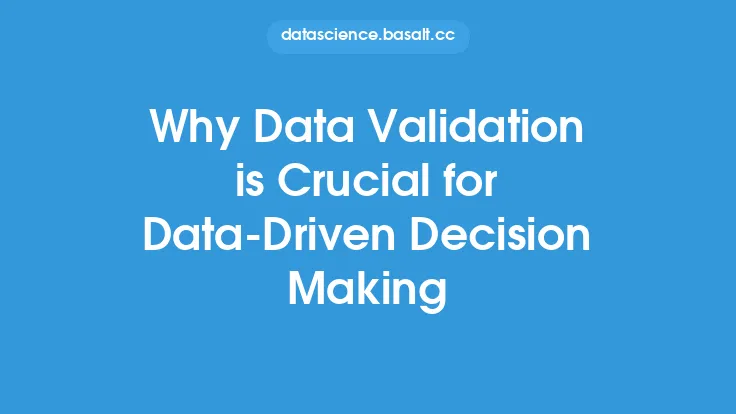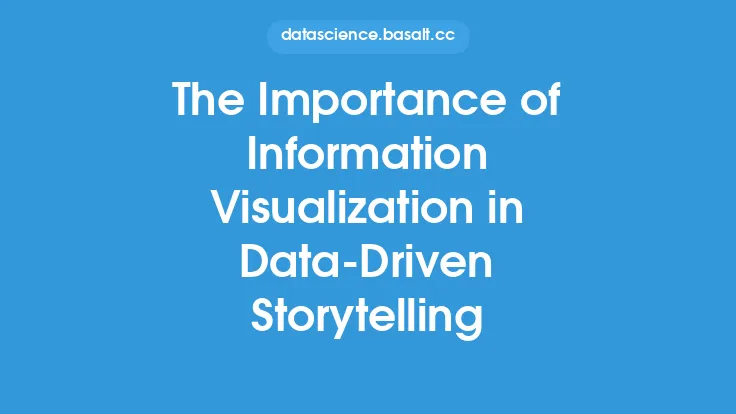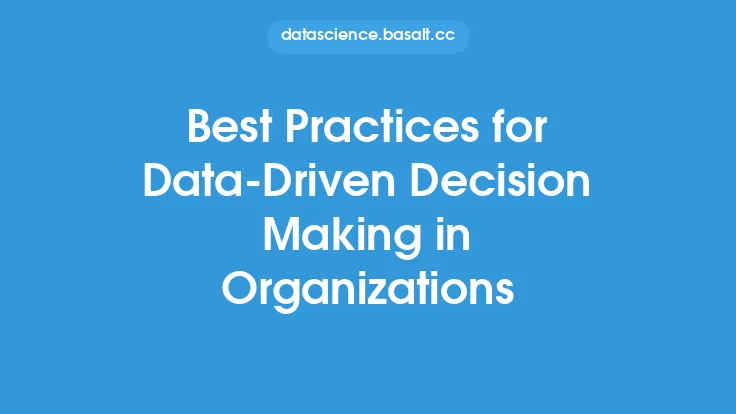In today's data-driven world, organizations are constantly seeking ways to make informed decisions based on the vast amounts of data at their disposal. One crucial aspect of achieving this goal is effective information visualization. Information visualization is the process of using visual representations to communicate information and data insights to users, enabling them to understand complex data patterns, trends, and relationships. When done correctly, information visualization can facilitate data-driven decision making by providing stakeholders with a clear and concise understanding of the data, allowing them to make informed decisions.
Introduction to Information Visualization
Information visualization is a multidisciplinary field that combines aspects of computer science, statistics, and design to create interactive and dynamic visualizations. The primary goal of information visualization is to present complex data in a way that is easy to understand, facilitating the discovery of patterns, trends, and correlations. Effective information visualization requires a deep understanding of the data, the audience, and the purpose of the visualization. By leveraging various visualization techniques, such as charts, graphs, and maps, information visualization can help users to identify key insights, detect anomalies, and track changes over time.
Principles of Effective Information Visualization
To create effective information visualizations, several key principles must be considered. First, the visualization should have a clear and well-defined purpose, communicating a specific message or insight to the user. Second, the visualization should be tailored to the target audience, taking into account their level of expertise, interests, and needs. Third, the visualization should be intuitive and easy to use, allowing users to quickly understand the data and navigate the visualization. Fourth, the visualization should be aesthetically pleasing, using color, typography, and composition to create a visually appealing representation of the data. Finally, the visualization should be interactive, enabling users to explore the data in more detail, filter out irrelevant information, and drill down into specific areas of interest.
Types of Information Visualizations
There are numerous types of information visualizations, each suited to specific use cases and data types. Some common types of visualizations include:
- Scatter plots: used to display the relationship between two continuous variables
- Bar charts: used to compare categorical data across different groups
- Line charts: used to show trends and patterns over time
- Heat maps: used to display the relationship between two categorical variables
- Tree maps: used to display hierarchical data and relationships
- Network diagrams: used to display complex relationships and connections between entities
Each type of visualization has its strengths and weaknesses, and the choice of visualization depends on the specific characteristics of the data and the goals of the analysis.
Best Practices for Creating Information Visualizations
To create effective information visualizations, several best practices should be followed. First, keep it simple: avoid clutter and unnecessary complexity, focusing on the key insights and messages. Second, use color effectively: use color to draw attention, convey meaning, and create visual hierarchy. Third, label and annotate: provide clear and concise labels and annotations to help users understand the data and visualization. Fourth, interactivity is key: enable users to interact with the visualization, exploring the data in more detail and filtering out irrelevant information. Fifth, test and refine: test the visualization with real users, gathering feedback and refining the design to ensure it meets the needs of the target audience.
Technical Considerations for Information Visualization
From a technical perspective, information visualization requires a range of skills and tools. Data preparation is a critical step, involving data cleaning, transformation, and aggregation to create a suitable dataset for visualization. Visualization tools such as Tableau, Power BI, or D3.js can be used to create interactive and dynamic visualizations. Programming languages such as Python, R, or JavaScript can be used to create custom visualizations and interact with the data. Data storage solutions such as databases or data warehouses can be used to store and manage large datasets. Scalability and performance are also important considerations, ensuring that the visualization can handle large datasets and user interactions without compromising performance.
Common Challenges in Information Visualization
Despite the many benefits of information visualization, several common challenges can arise. Data quality issues can compromise the accuracy and reliability of the visualization, while complexity and clutter can make the visualization difficult to understand. Limited interactivity can restrict the user's ability to explore the data, while poor design can lead to a visually unappealing and ineffective visualization. Scalability and performance issues can also arise, particularly when dealing with large datasets or high-traffic applications. By being aware of these challenges and taking steps to address them, organizations can create effective information visualizations that support data-driven decision making.
Future Directions for Information Visualization
As the field of information visualization continues to evolve, several future directions are emerging. Artificial intelligence and machine learning are being used to create more sophisticated and automated visualization systems. Virtual and augmented reality are being explored as new mediums for information visualization, offering immersive and interactive experiences. Big data and IoT are driving the need for more scalable and performant visualization solutions, capable of handling large datasets and real-time data streams. Collaboration and storytelling are also becoming increasingly important, as organizations seek to create visualizations that communicate insights and tell stories to diverse audiences. By staying at the forefront of these developments, organizations can unlock the full potential of information visualization and drive data-driven decision making.
